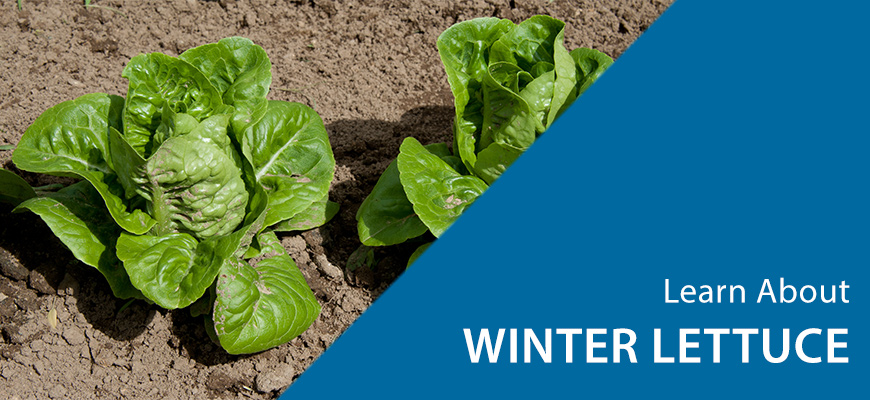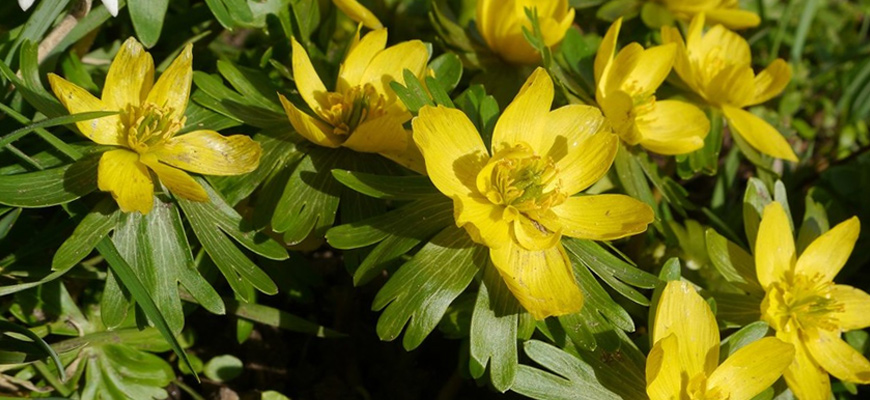Winter Fruits to Eat and Grow in the UK
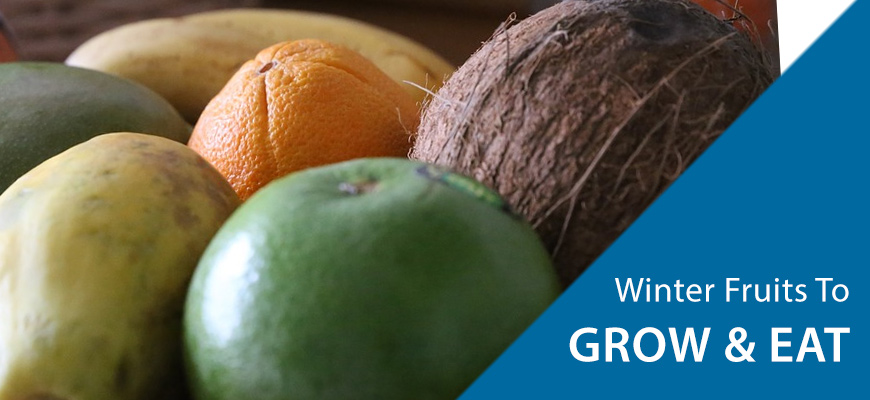
The winter months in the UK can be hard on the system – drops in vitamin D as the sun hides behind cloud cover and the rains drive us indoors for more of the ever-shortening days – and it’s important to give your body what it needs to stay healthy, to support a positive frame of mind, and to keep you cheerful on even the drabbest of days. This list of delicious and nutritious winter fruits can help.
1. Clementine
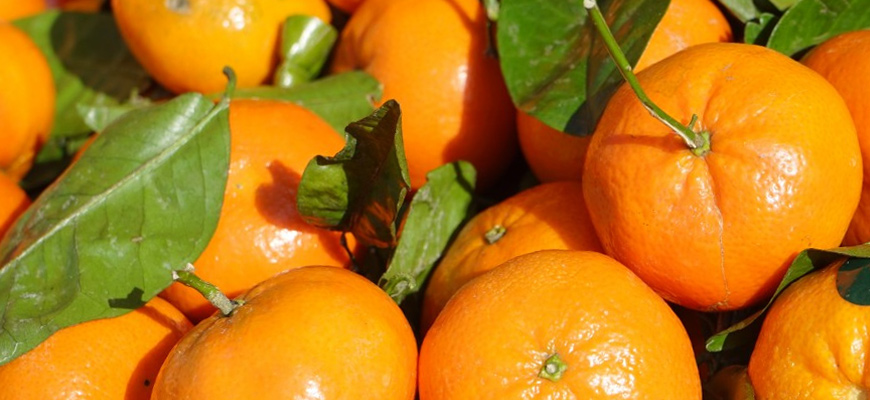
A mixture of a mandarin orange and a sweet orange, clementines are available all year long and are excellent sources of vitamin C. Since they grow in Florida and similar climates all through the winter months, you can find a reasonably fresh, naturally grown source.
They are best eaten raw, straight from the fridge, and peel quite easily.
2. Date Plums
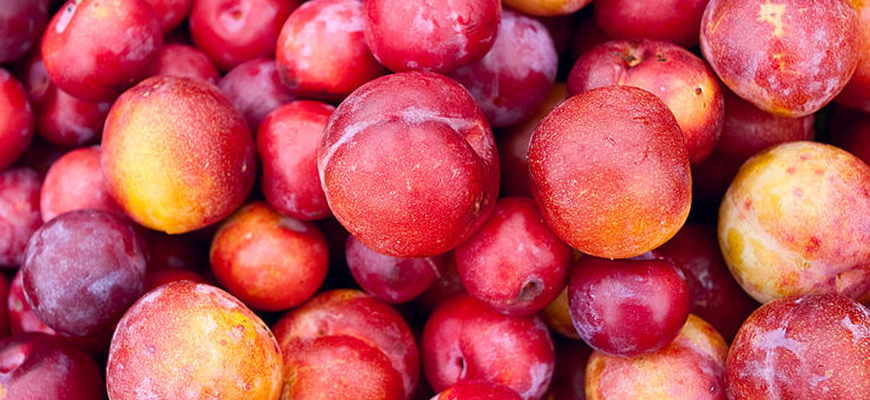
These small yellow plums are packed with fibre, vitamins A and C, and they contain no cholesterol. They can help to boost your immune system in peak flu season, and perhaps best of all, they taste great.
They can be eaten raw, and don’t need to be peeled – just wash one and pop it in your mouth.
3. Dates

Don’t let their diminutive size fool you, these little guys are packed vitamins and minerals. They are a good source of calcium for teeth and bones, of iron to prevent anaemia and associated loss of energy, of course they are packed with fibre.
Not only are they delicious on their own, but there are many recipes that use them in chopped, pasted, or other forms.
4. Grapefruit
This grand-daddy citrus grows in warmer climates throughout the winter months, so a fresh, natural source is easy to find. It packs a tangy punch, so most sprinkle a little sugar onto it to balance the taste, but once tamed in this way it is a refreshing, invigorating snack, desert or light breakfast.
They are high in vitamin C and is known as a booster for the immune system – a delicious way to stay healthy and keep the winter bugs at bay.
5. Kiwi Fruit
Kiwi fruit can be a bit finicky to open and eat, but once the process is practiced a few times, it becomes second nature and you won’t even think about it. Cut a fruit in half, take a spoon and run it along between the flesh and the skin, and a half-egg shaped portion will pop free. Fibrous and sweet, with tiny pops of seeds as you chew it, the fruit is unique and exotic to the tastes of northerners, and most often an instant hit.
High in vitamin C and antioxidants, kiwi fruit is also great as a way to perk up salads or add some tanginess to deserts.
6. Mandarin Oranges
Among the sweetest, and smallest, of the oranges, these are delicate-membraned fruits with an explosion of flavour. Known as Christmas Oranges in some parts of the world, a winter harvest is the natural order for them, and sweet, fresh deliveries are common in the colder months of the norther hemisphere.
Eat them raw, or add segments to a fruit salad for a tangy punch.
7. Papaya
Papayas, once difficult to get due to longer shipping times, can now be enjoyed nearly everywhere in the world, and nearly all year long. Rich in vitamins B and C, it is known as an antioxidant, and a good source of minerals to support colon and general health.
It is rich, sweet, and juicy in its best condition, and is especially delicious when sliced and combined in a salad with other fruits from this list.
8. Oranges
It’s a long-time staple in the fruit drawer, and rightfully holds its own place despite the increased availability of more varied and exotic fruits from around the world. They contain vitamin C, of course, but they are also rich in phytochemicals, believed to help protect against cancer and other ailments such as kidney disease.
If buying your oranges is getting you down, then why not try growing your own? Certain varieties can be grown indoors in a pot in the UK, and will yield a little fruit – and a lot of satisfaction – to lift you spirits in the cold winter darkness, and bring a smile to your face.
9. Passionfruit
Passionfruit is one that many people shy away from if they haven’t eaten it since childhood. Why? Unlike many other fruits, it doesn’t look a lot like something else. It’s solid outside, but the interior is gelatinous and strange-looking at first sight.
But wait. Don’t let the appearance keep you from adding a great new item to your diet. This is a delicious, sweet, and healthy fruit, packed with vitamins. It’s so delicious that many product innovators have marketed it in different forms. We’ve all seen passionfruit smoothies, or passionfruit juice drinks – there is even passionfruit frozen yogurt.
Learn from those trends and give passionfruit a try in its natural form; you won’t regret it.
10. Pears
Pears are a great option (or addition) to apples and oranges. There is a lot of difference between varieties, resulting in different sizes, shapes and consistencies – and of course tastes. In general, pears are easy to throw into a lunch bag, can be eaten whole after a quick rinse, and leave very little waste.
You can eat them when they’re still very firm and almost woody, or let them ripen into a soft and sweet treat that melts in your mouth. You can even poach, steam, or roast them for use as a healthier desert option.
11. Persimmons
Persimmons (also known as Sharon fruit, Hachiya, or fuyu) are often used in puddings. They are tomato-shaped and quite sweet when ripe. Beware of eating them too soon though, or you risk a mouthful of tannins. At the right time though, they are a great source of flavonoids.
They can be eaten raw, or incorporated into a variety of recipes. If you are new to this fruit, look over a couple of recipes first, then buy what you need and start to experiment. You’ll be very pleased you did so, and adding this fruit – cooked or raw – to your regular diet will promote heart-health.
12. Pomegranate
Commonly considered one of the Superfoods, pomegranates have an outer skin, and an inner pithy structure surrounding clusters of tart, flesh-covered pips. These are bright red and burst with flavour when bitten. In fact, pulling a pomegranate apart can often result in streaks of red juice on tables, walls, and even ceilings, so don’t be too rough in your efforts to discover the treasure inside.
Pomegranates are thought to protect against memory loss, heart disease, and even cancer. All those benefits in a delicious, beautiful fruit? It’s a great addition to any diet.
Eat the pips raw – with a napkin on hand – or mix them in to any kind of salad for interest and tiny bursts or flavour.
13. Red Banana
Unless you’ve lived in Mexico, Australia, or Central America, you may not have run across this little gem of the fruit world. As the name suggests, it looks very much like a regular banana, but it’s red in colour and often smaller in size.
If you are already a fan of the flavour of the banana, then imagine infusing one with hints of raspberry and the wafting scent of strawberry. No mess, no fuss, no sauces or powders, just the lovely combination of a fruit favourite with a couple of complementing berries – all in a single, easy package. If you can find some in your area, they are well worth the search.
14. Tangerines
Tangerines, like clementines, mandarins, and several other oranges and orange-like fruits, have the same basic structures as its cousin-fruits. The peel on the outside, and the segments inside, filled with fleshy, pip-shaped fruit. It contains a little less fibre than an orange does, but has roughlyt he same characteristics in other respects.
The choice to make between oranges and their similar kin comes down to your preference for texture and nuance of flavour. Tangerines tend to peel very easily and leave little white pith behind on the inner membrane. The segments come apart easily and the flavour of the flesh itself is generally suite and fragrant.
15. Apples
Apples are one of the widest-known fruits in the world, and yet the single word ‘apple’ doesn’t really cover the amazing amount of variation in the fruit. Hundreds of varieties have been developed all over the world, and new ones still emerge occasionally. They are fairly hardy, travel well, and come with almost any flavour characteristics you can ask for, from tart, to bland to sweet and almost citrus-like.
If you aspire to grow your own food, on a large scale or in a pot by the window, and apple tree is a great starting point.
16. Kumquats
The Kumquat is a small citrus fruit that is a little like a cross between an orange and a pear. They are tangy and have a distinct flavour that set them well apart from most other fruits. They are about the size of a big olive, the skin is sweet (you can eat it), and the interior is tart.
17. Star Fruit
A star fruit is, unsurprisingly, star-shaped. It’s green in colour and, though it is a low-calorie fruit, it has a pleasant taste and is rich in useful ingredients like antioxidants and fibre. Different methods of preparation can highlight either its sweet or sour notes.
It is often blended as an ingredient in smoothies, or juiced and blended with other ingredients.
18. Quinces
Unlike most fruits, the quince is inedible when first picked, no matter how ripe it is. It must be cooked in order to unlock its benefits, but once you do, there are a great many ways you can bring out the intense flavour of this ancient ingredient.
19. Rambutans
Rambutans, sometimes called dragon fruit, or dragon’s eyes, these have a wild-looking outer skin with thick, hair-like strands sticking out all around the central ball. A ripe one will peel relatively easily, however, and the whitish, translucent flesh inside is sweet, juicy, and has a pleasing snap against the bite, making it both delicate and texturally interesting at the same time. They don’t last long once ready to eat though, so they don’t travel particularly well, and are best eaten within a day or two of purchase.
Pull off the skin, and pop the flesh in your mouth for delicious treat – use caution though; there is a pit inside.
Summary
A few of these wonderful fruits can be grown in the UK, and all of them can be found at major grocers’ shops throughout the country. Get a little adventurous! Peruse the fruits and vegetables aisle at your local grocer’s, and choose something that looks strange or exotic to you. Note the name of it and either ask a knowledgeable grocer for tips on preparation and consumption, or simply Google it for ideas and guidance. You’ll not only reap the health benefits of broadening and varying your diet with unrefined, natural foods, you’ll also make your home menu more interesting, varied, and exciting.
Resources
https://www.ncbi.nlm.nih.gov/pmc/articles/PMC3983846/
Last Updated on March 23, 2023 by Matt
Contents

